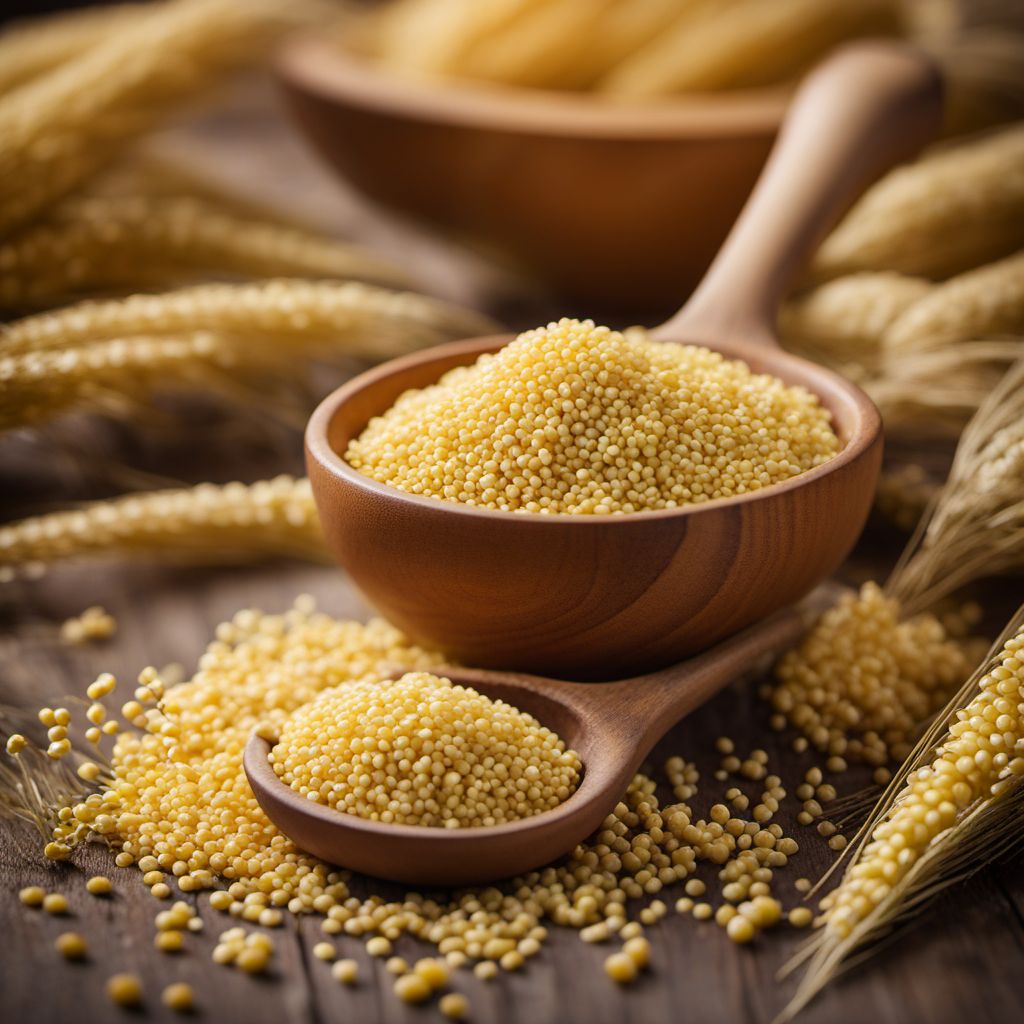
Ingredient
Common millet and similar-
The Mighty Millet: A Versatile and Nutritious Grain
Common millet is a small, round grain with a pale yellow color. It has a mild, nutty flavor and a delicate texture when cooked. This grain is often used as a substitute for rice or couscous and can be cooked as a pilaf, added to soups, or used in salads. It is a staple in many Asian and African cuisines.
Origins and history
Common millet has a long history of cultivation and consumption, dating back thousands of years. It is believed to have originated in China and spread to other parts of Asia, Europe, and Africa. Millet has been a staple food in many cultures, particularly in regions with arid climates where other grains may not thrive. It is known for its resilience and ability to grow in harsh conditions.
Nutritional information
Common millet is a good source of carbohydrates, dietary fiber, and essential minerals like magnesium and phosphorus. It is also gluten-free, making it a suitable option for individuals with gluten sensitivities or celiac disease. Additionally, millet contains antioxidants and phytochemicals that contribute to its nutritional value.
Allergens
There are no known allergens associated with common millet.
How to select
When purchasing common millet, look for clean, dry grains that are free from moisture or signs of insect damage. Opt for organic or locally sourced millet whenever possible to support sustainable farming practices and ensure the best quality.
Storage recommendations
To store common millet, transfer it to an airtight container and store it in a cool, dry place. Properly stored millet can last for up to 2 years. Avoid exposing the grains to moisture or humidity, as it can cause them to spoil or become infested with insects.
How to produce
Common millet can be grown in a home garden or backyard with well-draining soil and full sun. Sow the seeds directly in the soil and keep them well-watered. Harvest the grains when they are fully mature and dry, usually within 70-90 days of planting.
Preparation tips
Common millet can be cooked by boiling it in water or broth until tender, similar to rice. It can be used as a base for pilafs, added to soups or stews, or used in salads. Toasting the grains before cooking enhances their nutty flavor. Millet flour can also be used in baking as a gluten-free alternative to wheat flour.
Substitutions
Quinoa, amaranth, or buckwheat can be used as substitutes for common millet. These grains offer similar nutritional profiles and can be cooked in similar ways.
Culinary uses
Common millet is commonly used in Asian and African cuisines. It is often used as a substitute for rice or couscous and can be cooked as a pilaf, added to soups, or used in salads. In India, millet is used to make rotis, a type of flatbread. It is also used in porridges and as a thickening agent in soups and stews.
Availability
Common millet is commonly available in Asia, Africa, Europe, and North America.
More ingredients from this category

Finger millet grain
The Nutritional Powerhouse: Finger Millet Grain

Canary grass grain
The Nutritional Powerhouse: Canary Grass Grain
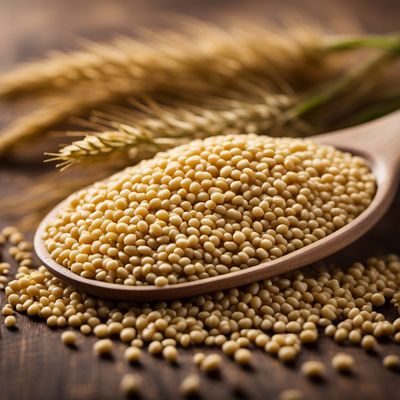
Foxtail millet grain
The Ancient Superfood: Foxtail Millet Grain
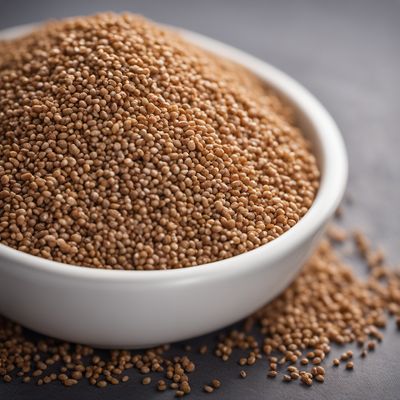
Teff grain
Teff: The Ancient Superfood

Little millet grain
The Mighty Mini Grain
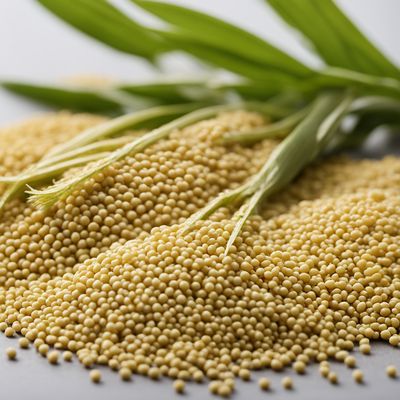
Barnyard millet
The Tiny Grain with Big Benefits: Exploring the Wonders of Barnyard Millet
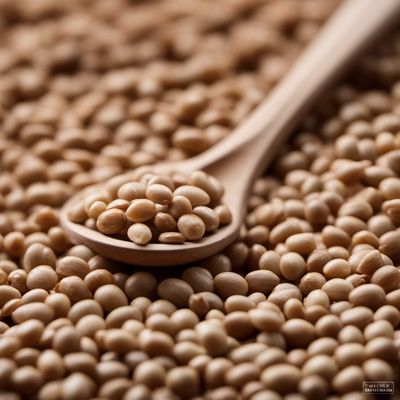
Job's tears grain
The Ancient Grain of Health
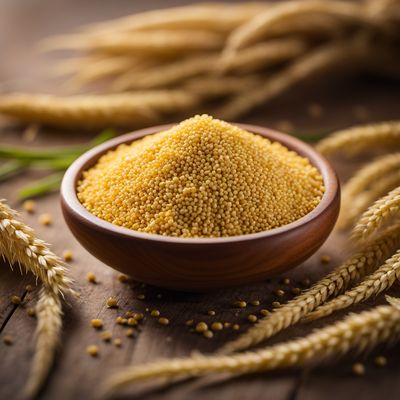
Common millet grain
The Mighty Millet: A Nutritious Ancient Grain

White fonio grain
The Ancient Superfood: Unlocking the Power of White Fonio Grain

Pearl millet grain
The Nutrient-Rich Ancient Grain: Pearl Millet Unveiled
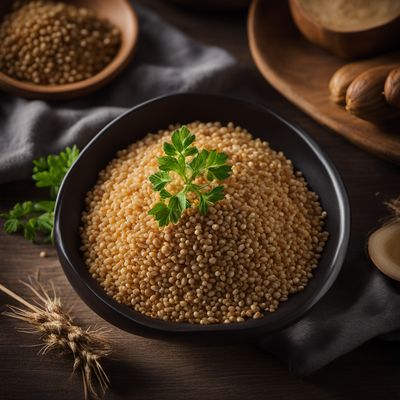
Black fonio grain
The Tiny Nutritional Powerhouse